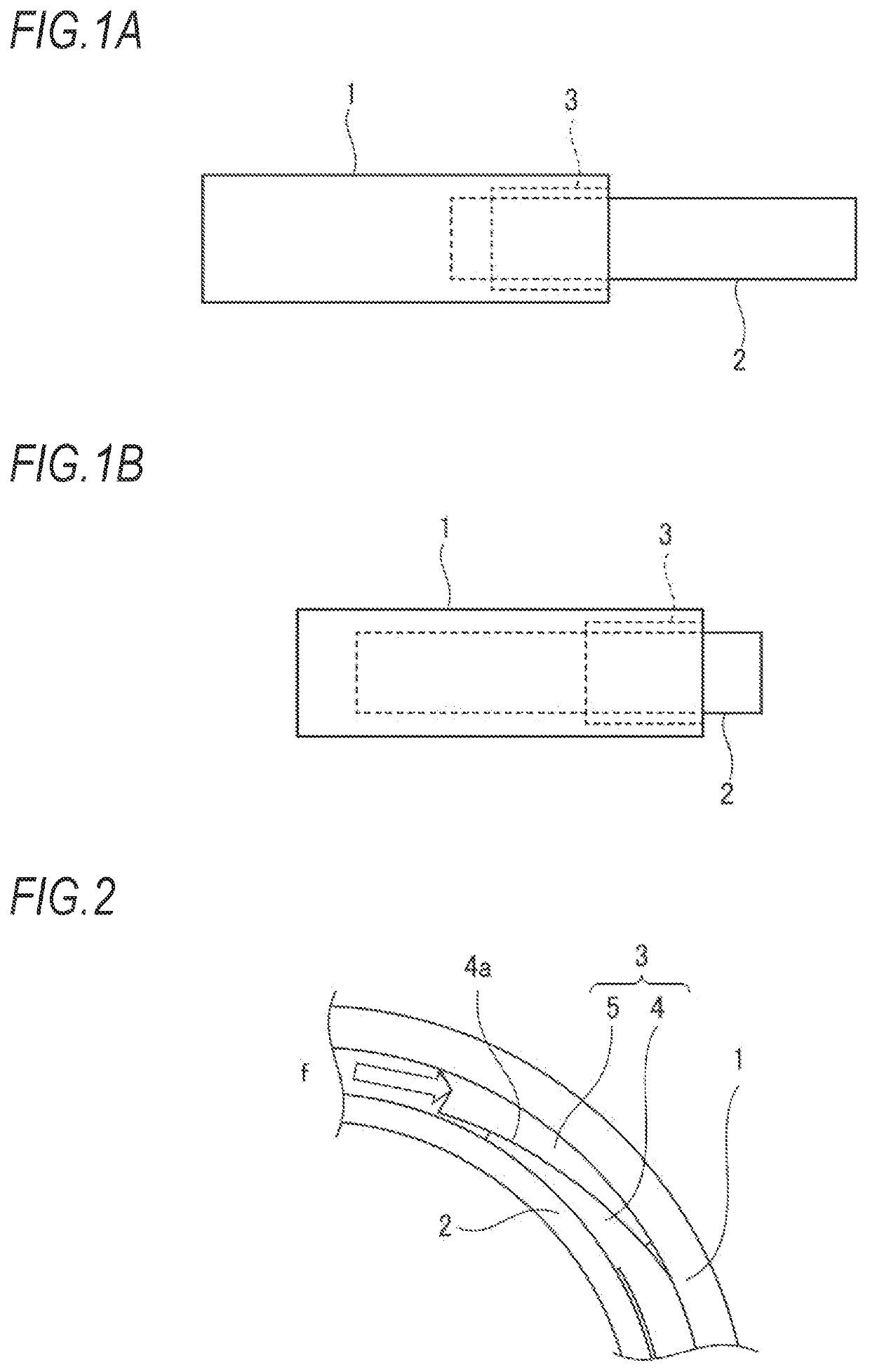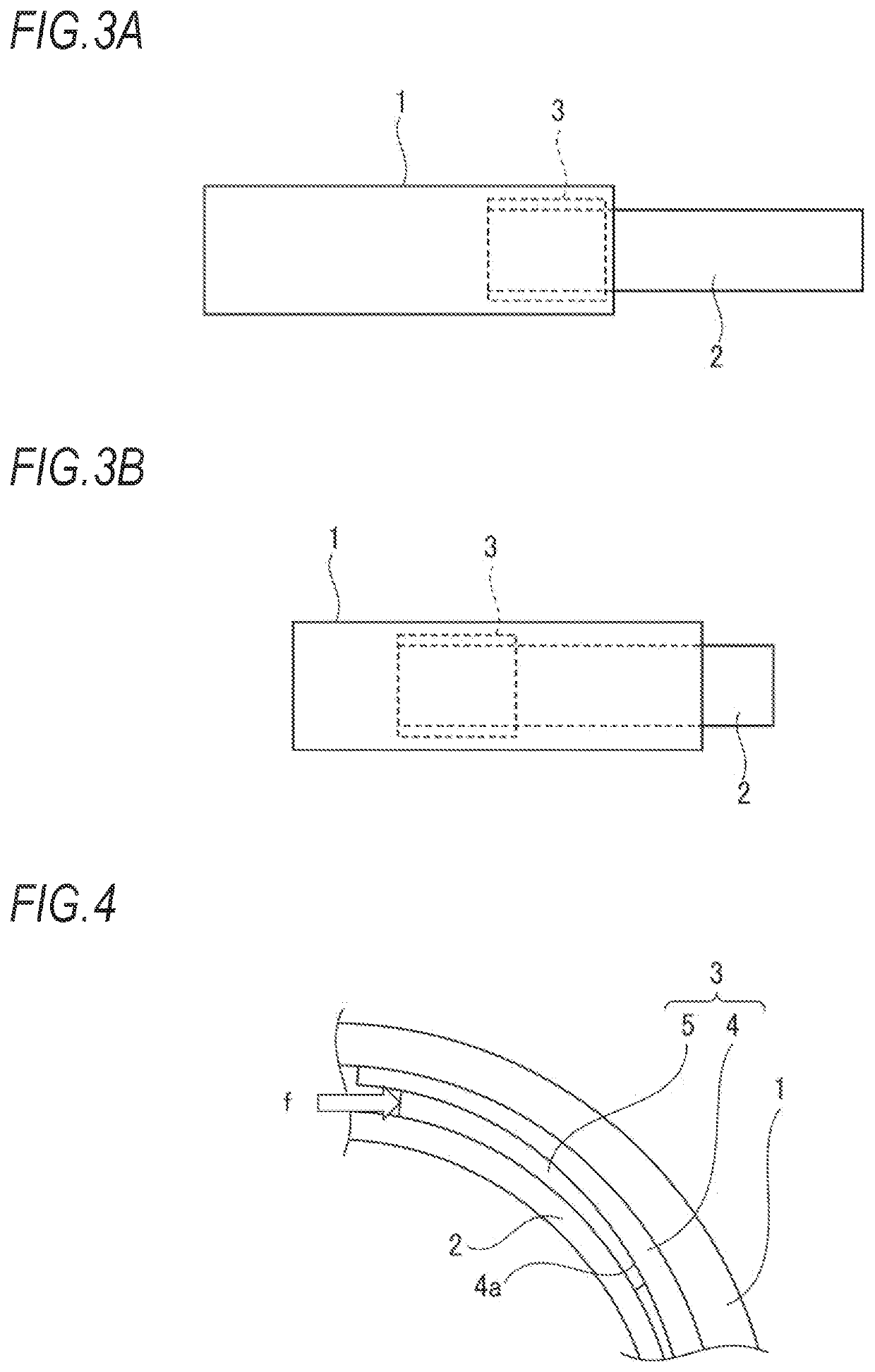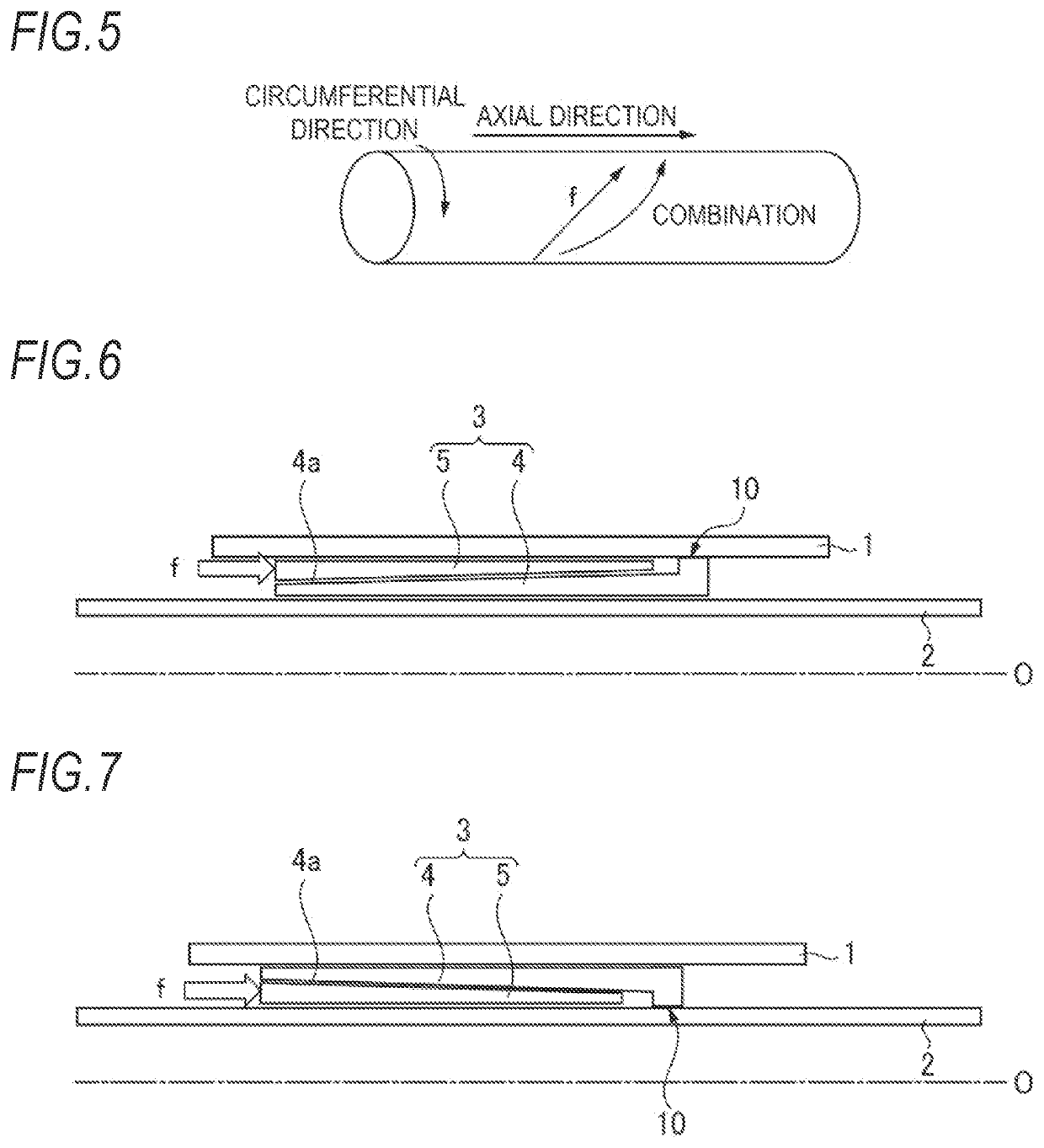Telescopic structure and steering column
a telescopic structure and steering column technology, applied in mechanical devices, couplings, transportation and packaging, etc., can solve the problems of low rigidity, limited rigidity, and difficulty in adjustment of rigidity, and achieve the effect of small sliding force without backlash
- Summary
- Abstract
- Description
- Claims
- Application Information
AI Technical Summary
Benefits of technology
Problems solved by technology
Method used
Image
Examples
first embodiment
[0193]FIG. 26A is an end view of a sliding interface using circumferential wedges as viewed in the axial direction according to a first embodiment of the present invention, and FIG. 26B is a partial perspective view thereof. In FIGS. 26A and 26B, the reference numeral 1 denotes an outer tube, the reference numeral 2 denotes an inner tube, a reference numeral 401 denotes a sleeve, a reference numeral 402 denotes four contact surfaces of the sleeve 401 at this axial position, reference numerals 501, 502 denote wedges, a reference numeral 601 denotes a spring, and a reference numeral 905 denotes a fixing position (fixing portion) of the sleeve. In the following description of the embodiment of the present invention, the outer tube 1 is a housing when used in the steering column described later. As shown in FIG. 26A, the sleeve 401 and two wedges 501, 502 are inserted between the outer tube (the housing) 1 and the inner tube 2. The sleeve 401 has a shape opened by a gap G on a lower sid...
second embodiment
[0195]FIG. 27A is a partial perspective view of a sliding interface using circumferential wedges according to a second embodiment of the present invention, FIG. 27B is an end view of the sliding interface in FIG. 27A as viewed in the axial direction, and FIG. 27C is a view showing an assembly of a sleeve and the wedges constituting the sliding interface in FIG. 27A. In FIGS. 27A, 27B and 27C, the reference numeral 1 denotes an outer tube, the reference numeral 2 denotes an inner tube, a reference numeral 403 denotes a sleeve, a reference numeral 404 denotes contact surfaces of the sleeve 403, reference numerals 503, 504 denote wedges, a reference numeral 603 denotes a spring, reference numerals 801, 802 denote flanges formed at both axial ends of the wedges 503, 504, and a reference numeral 906 denotes sleeve fixing protrusions (tabs). The sliding interface according to the second embodiment is different from the sliding interface according to the first embodiment in the following p...
third embodiment
[0203]FIG. 29 is an end view of a sliding interface using circumferential wedges as viewed in the axial direction according to a third embodiment of the present invention. In FIG. 29, the reference numeral 1 denotes an outer tube, the reference numeral 2 denotes an inner tube, the reference numeral 405 denotes a sleeve, reference numerals 507-1, 507-2 denote two connected wedges, and the reference numeral 605 denotes a spring. The sleeve 405 is fixed to the outer tube 1 (not shown), and covers an entire outer circumferential surface of the inner tube 2 except for a position of the gap G of the sleeve 405. Two wedges 507-1, 507-2 having wedge surfaces in the same direction and connected to each other are inserted between the outer tube 1 and the sleeve 405. An arrangement of the wedges 507-1, 507-2 in a configuration in FIG. 29 is obtained by applying the arrangement in (5) of FIG. 14 in the circumferential direction, and the sleeve 405 has two continuous portions 405-1, 405-2 having...
PUM
 Login to View More
Login to View More Abstract
Description
Claims
Application Information
 Login to View More
Login to View More - R&D
- Intellectual Property
- Life Sciences
- Materials
- Tech Scout
- Unparalleled Data Quality
- Higher Quality Content
- 60% Fewer Hallucinations
Browse by: Latest US Patents, China's latest patents, Technical Efficacy Thesaurus, Application Domain, Technology Topic, Popular Technical Reports.
© 2025 PatSnap. All rights reserved.Legal|Privacy policy|Modern Slavery Act Transparency Statement|Sitemap|About US| Contact US: help@patsnap.com



